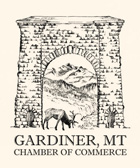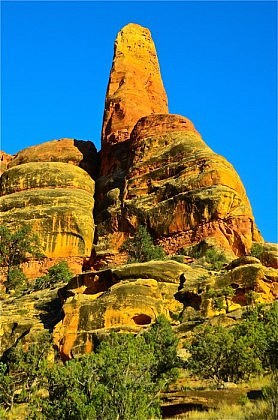One misconception about wildfire is that it “damages” or “devastates” a landscape, and that the ensuing years are all about “recovery”. These are value-laden words, lacking in ecological context. In fact, natural lightening-ignited wildfire has been part of our western landscapes for many thousands of years, and phases of post-fire forest growth, from ancient forests to freshly burned landscapes and everything in between, are all part of the natural cycle.
Another misconception is that the abundant dead trees in the wake of wildfire are a further fire hazard. They are not. In fact, the most flammable part of the forest are the needles and small twigs, not the tree boles and bigger branches that remain after the blaze. Usually, the small twigs and needles burn up, so recently burned areas are actually much less flammable than previously. The truth is that recently burned forests with lots of dead trees form what ecologists refer to as “snag habitats”, which are particularly rich in biodiversity. Dozens of vertebrates utilize the dead trees, and insect life — which forms the base of the food web — is especially abundant. Post-fire snag forests are rich forests indeed.
In addition, some folks in the U.S. Forest Service and in the timber industry have perpetrated a particularly egregious myth: that most western forests historically burned at frequent intervals and at low intensities, thus creating an open park-like forest. Therefore, the thinking goes, the woods are now overgrown due to decades of fire suppression, and the cure, of course, is to log these forests back into their “natural” condition of low tree density. This paradigm is partially true for some low elevation western ponderosa stands, particularly in the southwestern U.S., such as the Gila Wilderness. But as recent research has proven, most western forests — including those in the Yellowstone region — historically burned at mixed intensities and at intervals ranging from every 60-80 years to every 400 years or longer. So, increased density in older forests is perfectly natural. In truth, large-scale high intensity blazes — such as those which scorched Yellowstone in 1988 — have always been a perfectly natural part of the mix. So too, dense woods are a perfectly natural landscape feature in many habitats, and such forests are not in “need” of “restoration” logging by the Forest Service and the timber industry. Large-scale blazes, by the way, actually represent a small percentage of wildfires but affect a large area of the landscape.
One final myth for now: wildfire is fuel-driven, and logging the woods reduces fuels and wildfire intensity. Again, though, science says otherwise. Big wildfires are weather driven, and given a drought plus hot weather and wind, will burn through thinned or heavily logged over woods as quickly as an old growth stand. In fact, because of increased wind and sun plus left over logging slash, recent studies have proven that more often than not, logging operations actually increase fire danger and intensity. After all, the loggers want the big tree stems, not the highly flammable needles and fine twigs and dense undergrowth (which usually burn up in a wildfire). Do not believe everything you hear or read!



